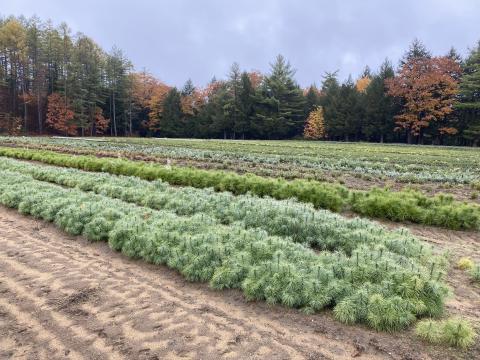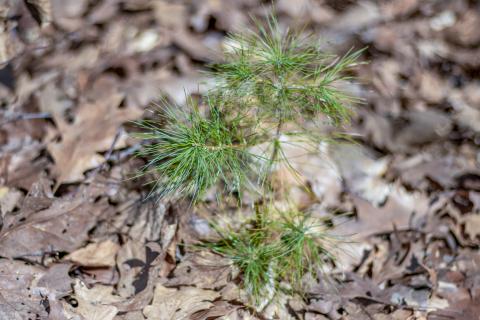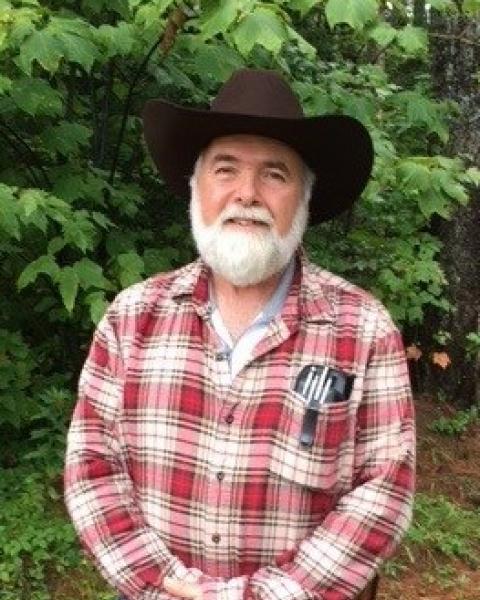May Woodlot Wanderings: Planting Tree Seedlings
Howdy everyone! We have now finished with the April Showers and are headed into the month of May. With some cooperation from Mother Nature things should begin to dry out enough so that we all may get into our gardens and yards to begin cleaning and planting. With the planting theme in mind, this is the month for planting tree seedlings. The folks at the State Nursery in Boscawen have been right out straight lifting seedlings from their beds to fill the myriad of orders to be delivered all over the state. Here in Coös County, we have over 9,700 seedlings being delivered on May 11. These will be available for pick-up, at the North Country Resource Center, 629 Main Street, Lancaster, from 11:00 am through 4:00 pm on the 11. A large portion of these seedlings, almost 1,300 to be precise, will be separated and delivered to Elementary Schools around our county. This is the ‘Seedlings to Schools’ program. This has been a program with our Cooperative Extension, and in cooperation with the NH Division of Forests and Lands, for many, many years. Here in Coös County, our County Conservation District is also a partner in this project. These seedlings are provided by the NH State Forest Nursery at no cost to the schools, delivered to the county Extension office, and picked up by some of our resident professionals from the Natural Resources field. These professionals deliver the seedlings to the individual school classes and provide a brief presentation for the students, and teachers, about the importance of trees in general, and how to care for and plant their new seedlings. The hope is that this program will inspire a few of our youth to follow their trees, and in the process become interested in one of the many aspects of the Natural Resources field, either as a hobby or to follow professionally.

So now that you have your seedlings, what do you do and how do you care for them? Well, here are a few tips from some of our experts here at UNH Cooperative Extension. When you get them home, plant them as soon as possible. Seedlings will have the best chance for survival if planted as soon as possible after you get them. If you can’t plant them right away, store seedlings in a cool, dark location until they can be. If it is going to be more than a day or so, wrap the roots in a damp cloth/towel, and place in a sealed baggie. The towel should be damp, not soaked, and the baggie either sealed with a twist tie or a zipper. This should keep the roots damp, but not too wet, and keep the seedling cool so it doesn’t try to grow while still in the bag.
When to Plant
The best season to plant seedlings is in the spring, typically late April to mid-May here in northern New Hampshire. During this period, soil moisture is typically high (especially now), temperatures are relatively mild, and hopefully, the trees to be planted are still mostly dormant. This is why the seedlings are delivered at this time of year. Plantings that occur during the late summer or into the fall are typically not as successful. This is mostly due to drier soil conditions and warmer temperatures. The seedlings are also typically not dormant so the shock to their system can be too much.
The new trees may grow slowly and very little for the first couple to few years. This is due to their concentrating energy on root development rather than growing upward. Some dieback may occur and depends greatly on how carefully they are planted as well as the weather and ground conditions at the time of planting.

Where to Plant
Trees and shrubs have specific soil and sunlight requirements, and these vary based on the species of tree or shrub being planted. However, all will do best if placed in sunny locations and in soils that have reasonably good drainage and ample topsoil. As a rule, do not plant in areas that are very dry in the summer months or very wet in the spring.
If the seedling is planted too deep, the roots may not get enough oxygen. If it is planted to shallow, some roots may dry out. Also, if air pockets remain around the roots due to poorly firmed or packed soil, the roots may dry out. Pack the soil firmly enough around the roots, typically by tamping with your boots, or pressing firmly with the heel of your hand, so that a vigorous pull is required to loosen the seedling. Also, remember to spread the roots as much as possible within the hole. If necessary, remove the seedling and dig the hole a bit bigger. Don’t forget to water the new seedling once it is planted. This will give it the best chance for survival without drying and will assist in packing the soil to minimize air pockets.
If you take proper care of your seedlings, they should provide years of enjoyment as you watch them grow and observe the ecosystem that develops around the tree as it moves from seedling to sapling to tree. You may even see your tree cast its own seeds and develop new seedlings.
Remember, should you have questions through any portion of this process, feel free to contact your Extension County Forester and they will do their best to share what they have learned throughout the years. Good Luck with your plantings and enjoy the season!
Have a question about your woods? Contact your Extension County Forester today!
Do you love learning about stuff like this? Subscribe to the NH Woods & Wildlife Newsletter.
A quarterly newsletter providing private woodlot owners in New Hampshire with woodlot management news, pest updates, resources, and more.

